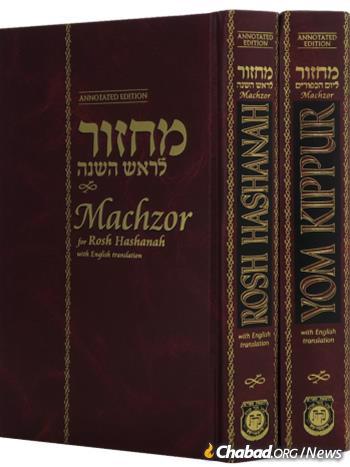With the sounds of the shofar already being heard each day during the month Elul, some can hear the echoes of the upcoming Rosh Hashanah prayers in anticipation of the holiday, which begins this year before sundown on Monday, Sept. 6.
The High Holidays are the focal point of the year for many, and the start of a new year gives the opportunity to step back, reconsider and start afresh, an idea much neglected in our turbulent world. But once again this year the High Holidays are arriving amid the ongoing coronavirus pandemic, with new uncertainty about the spread of the Delta variant of Covid. Instead of the scenes of overflowing synagogues and large numbers gathering to pray of years past, some congregations will again be curtailing their crowds this year, and some regulars will again be celebrating at home due to self-quarantining.
A year ago, Jewish publishers reported that the prospect of praying alone brought many to purchase their own Machzor prayer books for the first time, leading to record sales and dwindling volumes in stock, and they are expecting heavy sales again this year as well.
In Jewish teachings, the month of Tishrei is referred to as the month of festivals. Beginning with Rosh Hashanah, continuing with Yom Kippur, and culminating with Sukkot and Simchat Torah, the month is brimming spiritually uplifting moments, each holiday in its own form. With each holiday comes a set of observances—traditions enshrined throughout the centuries and customs passed down from generation to generation.
One of the special aspects of Rosh Hashanah is the unique prayers associated with the day. Jewish tradition teaches that Rosh Hashanah is the day that Jews reaccept G‑d’s kingship, crowning Him again as King. The holiday, in line with the name Rosh Hashanah, “head” of the year, is also seen as setting the tone for the entire upcoming year, giving it vitality, much like the physical head does for the body. The prayers reflect these themes, drawing upon these messages to connect to G‑d in a way unparalleled the rest of the year. The holiday prayers also contain beautiful poetic liturgy, authored by various Jewish sages and combined for a powerful prayer experience.
The Kehot Annotated Rosh Hashanah Machzor is an invaluable tool for anyone seeking to draw inspiration from these exquisite prayers. Together with its Yom Kippur companion, the Machzor presents a lucid translation of the prayers and hymns, alongside instructions to assist in fulfilling the laws and customs of the prayers and of the holiday. Having been reprinted numerous times since its first printing in 2003, its most recent edition was published last year.
Many Worshippers Do Not Own Machzor
Last year’s reprint came just at the right time. A large percentage of High Holiday congregants do not own their own Machzor for Rosh Hashanah or Yom Kippur, and instead, rely on their local synagogue or Chabad House to supply one for them. With many planning on spending the holidays at home and others unable to leave their house due to being in a high-risk category or immunocompromised, the need for a personal prayer book has skyrocketed over the past two years
Jewish bookstores around the country are again seeing their shipments of Machzorim quickly snatched up and are scrambling to order additional copies. Publishers and online stores—foremost among them the Kehot online shop—are doing their utmost to make the prayer books accessible to anyone across the country who needs or desires one.
“We again are working our utmost to assure that everyone can experience and celebrate the High Holidays, no matter where they may find themselves,” Rabbi Mendel Laine of Kehot Publication Society told Chabad.org. “Our goal is that every Jew—whether at home or in the synagogue—should have the ability to tap into the spiritual energy of the High Holidays, garnering the inspiration necessary for the upcoming year, which we hope and pray will be one of blessing and health.”
Rosh Hashanah and Yom Kippur Machzorim can be purchased at Jewish bookstores and at the Kehot online shop.








Start a Discussion